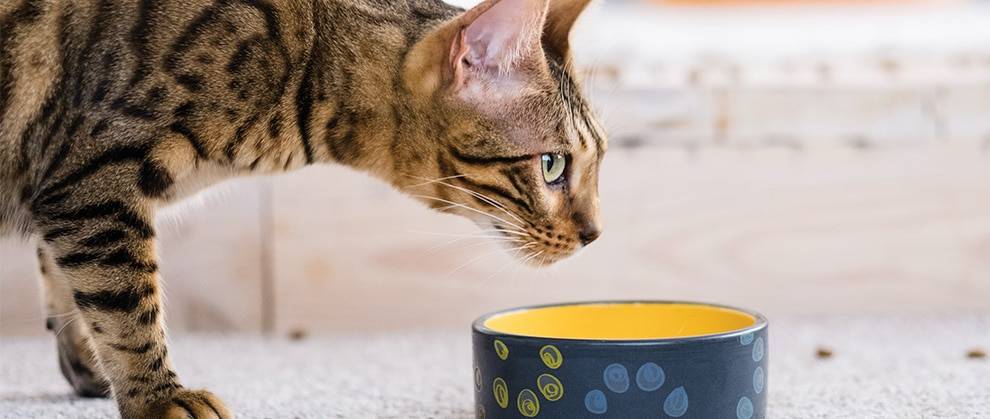[ad_1]
Obesity is a complex nutritional disorder that remains challenging to address and manage for veterinarians and clients alike. Successful weight-loss programs often require comprehensive management beyond a standard diet and exercise program. The most common and clinically applicable way to diagnose obesity or overweight status is by using a body condition score. Dr. Linder is a board-certified veterinary nutritionist at Cummings School of Veterinary Medicine at Tufts University. She is also co-director of the Tufts Institute for Human-Animal Interaction. Linder’s interests include nutritional management, client education, and human/animal interaction.
Dr. Linder is a board-certified veterinary nutritionist at Cummings School of Veterinary Medicine at Tufts University, where she also earned her DVM degree. Dr. Linder’s interests include nutritional management, client education, and human/animal interaction. Her current research focuses on safe and effective weight-loss strategies for pets as well as the effects of obesity on pet and human wellbeing. She is also co-director of the Tufts Institute for Human-Animal Interaction.
Obesity is one of the most common health problems affecting dogs and cats; up to 59% are overweight or obese.1-3 Obesity is a complex nutritional disorder that remains challenging to address and manage for veterinarians and clients alike. In the author’s experience, successful weight-loss programs often require comprehensive management beyond a standard diet and exercise program. Comprehensive management incorporates an understanding of the complex nature of obesity and its effects on owner/pet interactions and vice versa. Understanding these interactions can help veterinary staff know when and how clients might perceive weight-loss plans as a threat to their bond with their pet (e.g., the familiar “food is love” feeling). Obesity treatment and management can be multimodal and incorporate medical and behavioral perspectives to improve client adherence and patient outcomes. Although obesity can be a frustrating disorder to manage over the lifetime of a pet, incorporating each owner/pet relationship into the pet’s individualized weight-loss plan can not only strengthen the owner/pet bond but may also lead to increased overall success in obesity treatment. Standard diet and exercise plans are detailed elsewhere.4,5 This article describes strategies aimed at encouraging clients to engage and adhere to weight-loss plans and achieve positive results.
Setting the Stage for Success
Although many clients are unaware of their pet’s optimal weight or the consequences of excess weight on their pet’s health and wellbeing, education alone is often not enough to result in successful weight loss.6 By using various communication strategies, veterinarians can explore each client’s unique relationship with the household pets while preserving the bond between the owner and pet.
Body Condition Scoring
The most common and clinically applicable way to diagnose obesity or overweight status is by using a body condition score (BCS) system. This system provides an objective, visual measurement that demonstrates to clients their pet’s current weight in relation to ideal weight and provides a goal.
Each point on a 9-point BCS scale is generally defined as a 10% to 15% increase or decrease from ideal body weight. Although definitions of obesity vary, the 2014 American Animal Hospital Association Weight Management Guidelines describe being overweight as being 10% to 20% above optimal body weight (BCS 6 to 7 out of 9) and obese as 20% or more above optimal body weight (BCS 8 to 9 out of 9).4 Engaging clients to take an active role in their pet’s health can start by having them determine their pet’s BCS before offering a professional assessment (BOX 1).
BOX 1 Strategies to Help Clients Determine Body Condition Score
Step 1: Do the Feel Test Clients should always be able to easily feel their pet’s ribs by gently running the flat of their palms across the sides of their pet’s chest.
Step 2: Look for the Tuck For short-haired animals, clients should be able to see an abdominal tuck, where there is no belly hanging down beyond the pet’s rib cage when viewed from the side. Healthy-weight pets also have a “waist” behind their ribs when you look at them from above. Visual assessment of pets may be harder in long-haired animals, so feeling (Step 1) is the best method for checking fat stores.
Step 3: Compare to Your Hand To explain what a healthy pet should feel like (Step 1), ask clients to put their hand out with the palm down and fingers straight. Have them gently run their other hand over their knuckles and explain that this is how padded the pet’s ribcage should feel. Then have them turn their hand over so their palm is up (with fingers still straight) and run their other hand over the knuckles through their palm. Explain that if their pet’s ribs feel more like this, the pet is overweight. This exercise also helps describe how much pressure is needed to feel the ribs for fat stores.
Step 4: Use Resources The World Small Animal Veterinary Association has charts, and even a helpful video, that can help determine body condition (wsava.org/nutrition-toolkit).
Dietary History
The dietary history not only provides insight into what the pet has been consuming but also provides a better perspective into the client’s beliefs and priorities. History-taking can be time-consuming but is essential; a thorough history assesses everything the pet is consuming, including supplements, treats, and dental chews. It also includes feeding practices. During the history-taking you can determine “non-negotiables,” which are items that are very important to either the pet or a family member or integral to the owner/pet bond (e.g., food items for training or bedtime rituals with sentimental value to the client). To avoid attrition, selecting the optimal nutrient profile (e.g., fiber content, calorie density) for a weight-loss plan should be based on the preferences and lifestyle of the client and the pet as well as the pet’s tolerance of the diet (some are intolerant to particular ingredients or to the high-fiber content of some diets). A treat allowance (up to 10% of the total daily calories) should be reserved for treats, variety, and identified “non-negotiables.”
Strategies for Success
Determine Readiness to Change
After obesity has been diagnosed, healthcare team members may perceive initiating the discussion of a weight-loss plan as a struggle. One strategy for initiating such discussions is to first determine the clients’ readiness for change. Are they interested in making changes at all? Have they made changes and stopped after facing challenges? One article details the theory of stages of change and how to apply them to veterinary medicine.7 To initiate a discussion, open-ended phrases to better sense potential reception can be useful, such as, “It sounds like you are concerned that over the years as your pet gained weight, he lost his ability to jump and play like he used to,” or “I know I’d like a cookie over kibble, but like us, pets can get sick if they eat only candy all day. What if we looked into a nutrition plan that still included some of the treats your pet likes?” Some clients who are not ready to initiate a weight-loss plan may benefit from education only (and may further reject weight-loss plans if pressed when they are not ready), while others who are ready or have already started making changes may benefit from specific guidance and troubleshooting when they experience setbacks.
Acknowledge the Complex Owner/Pet Relationship
If clients are ready to initiate a weight-loss plan, understanding the owner/pet relationship can help you tailor the plan. Highly attached clients may be reluctant to withhold food or treats, which they feel define the relationship with their pet. Asking about the relationship between the pet and all members of the household may uncover the non-negotiable aspects of the owner/pet bond, which can be discussed and included in the weight-loss plan to increase adherence. Questions such as, “Is there anything you feel strongly about including in the plan?” or “Could you describe your daily routine with your pet?” can help guide optimal diet choice and brainstorming for what to include in the treat allowance (up to 10% of calories).
Share Your “Secret Weapons” Against Begging
Your secret weapons are enrichment and exercise. Although the mainstay of weight management is still calorie restriction, exercise can provide enrichment for pets on weight-loss plans. Physical activity can boost mental enrichment and provide an outlet for strengthening the human-animal bond without introducing or requiring additional calories (and, even better, reduce begging behaviors that may actually be the pet’s way of asking for attention rather than food). Great activities for dogs include brisk walks over increasing distances, swimming, and hunting/seeking games with favorite toys or small pieces of kibble allowed in the diet.
For cats, activity can be increased by spreading their food throughout the house, using food dispensing toys, or even playing with laser lights. Clients who feed canned cat food can use that as an inducement for exercise; they can open up the can and have the cat follow them around the house for 5 to 10 minutes before each meal. Ohio State University offers more suggestions for increasing environmental enrichment at indoorpet.osu.edu.
Get Creative with Treats
If clients are accustomed to giving treats (and pets are accustomed to receiving them), compliance with weight-loss plans may be increased by allowing treats. However, substitutions may be necessary to limit treats to no more than 10% of the total desired daily calories (BOX 2). Discussing what is important to each family can help guide a brainstorming session for creating a “treat menu” that families can use when needed. For example, if a client is discouraged by the volume of food the pet receives (or does not receive) each day, they can add the treat allowance (fiber-filled vegetables) to the meals to help their pet feel more full. Clients who would like to provide more treats throughout the day or are involved in training their pet can utilize a portion of the daily kibble or lower-calorie commercial treats. Pets would still hear a crinkly treat bag and see the food come from the “special bag,” satisfying both the client’s need to give something special and the pet’s desire for additional human interaction while providing a low-calorie alternative.
BOX 2 Case Example
Marty was a 5-year-old male neutered Labrador retriever, who was “always heavy and nothing ever worked to get weight down,” according to the client. At 120 lb and a BCS of 9/9, Marty had started limping. The client said that Marty had been receiving a therapeutic food for over a year and that it just hadn’t worked. After performing a full dietary history, it was determined Marty was receiving only 25% of his daily calories from the prescribed food and 75% of his calories from various chews, peanut butter, and cheese for medication administration (NSAIDs for the limping). The client had continued reducing the main food to get Marty’s weight down but had not calculated the calories he was getting throughout the day from other food items. When asked about “non-negotiables,” the client said that the most important component was a KONG toy filled with peanut butter that he gave Marty so he could make his own dinner without being interrupted. When further asked about why this toy was important, the client remarked that it kept Marty busy.
As long as Marty was kept busy by the KONG, it did not need to be filled with peanut butter. Therefore, instead of peanut butter (which was contributing 30% of his daily calories), the client started filling the KONG with therapeutic food in kibble form, adding water, and freezing it. This frozen treat reduced Marty’s daily intake by 20% while increasing the calories from complete and balanced pet food; the substitution met both Marty’s and the client’s needs. In addition, for administering medications, the client substituted mini marshmallows (3 kcal each) for cheese. Marty successfully lost weight with these modifications to his weight-loss plan.
Clients often need guidance, and while they can be overwhelmed with concern over giving up all their pet’s favorite treats, an alternative method to treat-giving is to provide a specific list of vegetables, fruits, lean meats, and the exact amount that can be fed to each individual pet. Focus on the positive aspects of the weight-management plan by having clients perform “taste tests” with many of these options to find new favorite foods their pet may love (TABLE 1).
Takeaway Points
Incorporating strategies to assess a client’s readiness to change and including aspects of the human-animal bond that are important to the client can help you individualize plans for each obese pet and improve adherence and outcomes.
- Gain client buy-in. Assess a client’s readiness to change to better determine how weight-loss plans should be approached and best received.
- Treat every pet as an individual. Spend some time talking with clients about their pet’s favorite activities, toys, and interactions, and if possible, incorporate them into the plan.
- See the forest through the treats. Getting a fully comprehensive diet history can be tedious but also can often explain why some pets are “nonresponsive” to initial weight-loss plans.
- Take advantage of resources. BOX 3 lists websites, articles, troubleshooting guidelines, and client-ready handouts that can improve the efficiency of weight-loss plans.
[ad_2]






